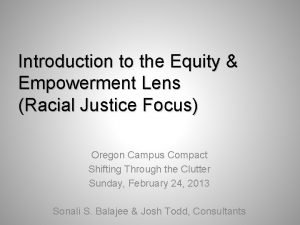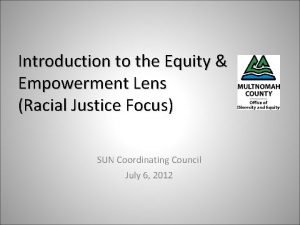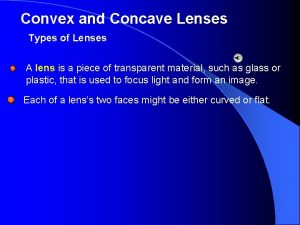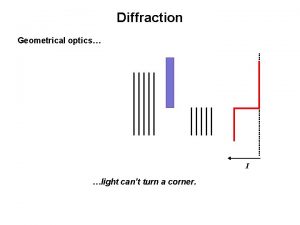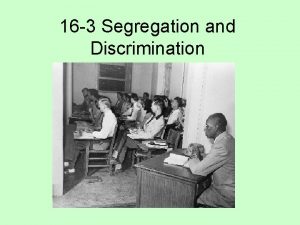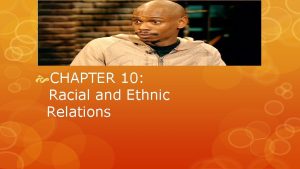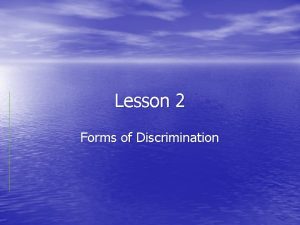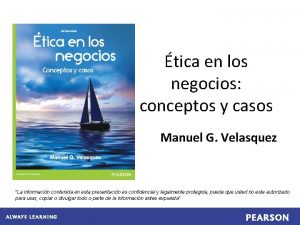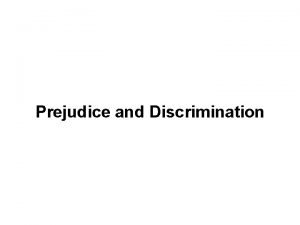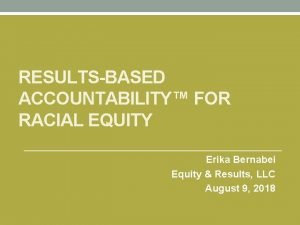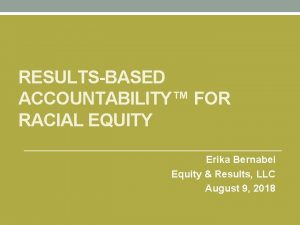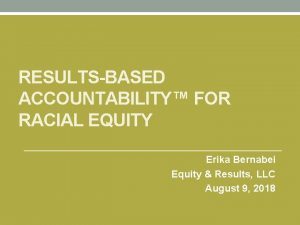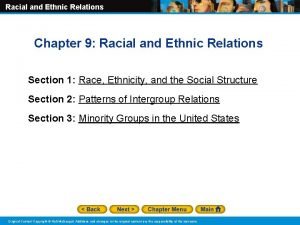Evaluation with a Racial Equity Lens Sally Leiderman













- Slides: 13

Evaluation with a Racial Equity Lens Sally Leiderman, CAPD November 2017 sleiderman@capd. org Please cite this presentation as: Leiderman, Sally. “Evaluation with a Racial Equity Lens Slides. ” November 2017. www. capd. org

From “Flipping the Script: White Privilege and Community Building” https: //static 1. squarespace. com/static/536 ce 727 e 4 b 0 a 03 c 478 b 38 e 4/t/560193 c 3 e 4 b 0 f 36 f 1 e 77 df 53/1442943 939596/Flipping+the+Script. pdf

Every evaluation is political and technical What constitutes success, and who says so? What resources are committed to ensuring that we will have sufficient and accurate data to disaggregate by race/ethnicity? What early or mid-point changes are likely to predict longer-term success, given likely resistance and retrenchment? What protections are in place for those with less power in the process?

Every evaluation is political and technical What types of qualitative and quantitative data are considered reliable and valid, and by whom? Who “owns” data? Who sees data first and what are the processes for addressing different perspectives on findings and conclusions, if there any? How are findings presented and shared in ways that do not “blame the victim”? What are the likely consequences of positive or negative findings? Whose responsibility, if it is anyone’s to address differential consequences based on power dyamics?


Source: http: //www. racialequitytools. org/resourcefiles/How_Can_We_Avoid_“Blaming_The_Victim”_When_We_Present _Information_On_Poor_Outcomes_For_Different_Racial__Ethnic__Language_Or_Immigrant_Groups_In_Our_ Community. pdf

What does a typical participatory evaluation look like in practice? Source: https: //participationdictionary. files. wordpress. com/2014/04/figure 2. jpg

Embedding a structural racism lens in evaluation - some ideas ● Collect sufficient data to disaggregate by each racial/ethnic group of interest to the issue (e. g. urban Native Americans and Native Americans on the reservation) ● Collect sufficient data to disaggregate by areas of intersectionality ● Acknowledge the limitations and controversies of Census definitions - where possible, ask people open-ended questions about identity. For example, “How do you define yourself in terms of…” ● Check the algorithms of any “summarized data” or administrative data that has consequences (e. g. reported incidences of interpersonal violence) and lay out clearly the limitations of the data ● Frame findings in terms of systemic issues; i. e. , if you report differential rates of high school graduation by race/ethnicity or language spoken in the home, also show availability of AP classes in the school

Source: https: //www. slideshare. net/Katherine. Ha ugh/mqp-eval 14 -notes

Some things we are thinking about in our practice right now ● Redefining rigor ● Redefining risk ● Redistributing consequences


Additional Resources ● Center for Culturally Responsive Evaluation and Assessment https: //crea. education. illinois. edu ● Racial Equity Tools www. racialequitytools. org ● Transforming White Privilege Curriculum https: //www. racialequitytools. org/module/overview/transforming-whiteprivilege ● Equitable Evaluation https: //www. equitableeval. org/ ● NCRP Philamplify indicators http: //www. philamplify. org/aboutphilamplify/philamplify-assessment-criteria/

“White privilege and time are elements that get in the way of relationships and progress. How foundations and how communities value time may be worlds apart. In the foundation, time is something you save; in the community, time is something you spend. ” From “Flipping the Script: White Privilege and Community Building” https: //static 1. squarespace. com/static/536 ce 727 e 4 b 0 a 03 c 478 b 38 e 4/t/560193 c 3 e 4 b 0 f 36 f 1 e 77 df 53/1442943 939596/Flipping+the+Script. pdf
 Equity and empowerment lens
Equity and empowerment lens Equity and empowerment lens
Equity and empowerment lens Convex vs concave lens
Convex vs concave lens Thin lens equations
Thin lens equations Nearsightedness
Nearsightedness Fresnel and fraunhofer diffraction difference
Fresnel and fraunhofer diffraction difference Promoting racial literacy in schools
Promoting racial literacy in schools In what region did racial etiquette exist
In what region did racial etiquette exist Chapter 10 racial and ethnic relations
Chapter 10 racial and ethnic relations Lesson 2: racial discrimination
Lesson 2: racial discrimination William jennings bryan apush
William jennings bryan apush Cartel ley organica contra la discriminacion racial
Cartel ley organica contra la discriminacion racial Black studies and the racial mountain
Black studies and the racial mountain Racial prejudice
Racial prejudice
